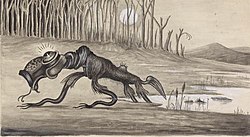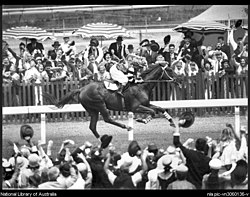Definitions
Folklore:
- The traditional beliefs, myths, tales, and practices of a people, transmitted orally.
- The comparative study of folk knowledge and culture.
- A body of widely accepted but usually specious notions about a place, a group, or an institution. [1]
Intangible culture:
Traditions or living expressions inherited from our ancestors and passed on to our descendants, such as oral traditions, performing arts, social practices, rituals, festive events, knowledge and practices concerning nature and the universe or the knowledge and skills to produce traditional crafts. [2]
Traditional cultural expressions (TCEs or TECs), also called 'expressions of folklore':
may include music, dance, art, designs, names, signs and symbols, performances, ceremonies, architectural forms, handicrafts and narratives, or many other artistic or cultural expressions. [3]
Collections of Australian Folklore
Australian folklore is preserved as part of The Australian Register Unesco Memory of the World Program [4] and the Oral History and Folklore collection of the National Library of Australia. [5]
Playlore
Australian Children’s Folklore Collection in Museum Victoria, coordinated by Dr June Factor and Dr Gwenda Davey. [6] [7]
Music
John Meredith Folklore Collection 1953-1994, held in the National Library of Australia. [8]
Rob and Olya Willis Folklore collection. [9]
O'Connor Collection. [10]
Scott Collection. [11]
Australian Traditional Music Archive. [12]
Australian Folk Songs [13]
Dance
Various books on folk dancing in Australia [14] [15]
Further reading
Davey, Gwenda Beed and Graham Seal (eds), The Oxford Companion to Australian Folklore, OUP, 1993.
Samuels, Brian. ‘The Australian Folk Revival: an historical chronology’, pp. 290ff. Antipodean Traditions: Australian Folklore in the Twenty-First Century edited by Graham Seal and Jennifer Gall. Black Swan Press, 2011.
Smith, Graeme. Singing Australian: A History of Folk and Country Music, Pluto Press, 2005.
This page is based on this
Wikipedia article Text is available under the
CC BY-SA 4.0 license; additional terms may apply.
Images, videos and audio are available under their respective licenses.
















